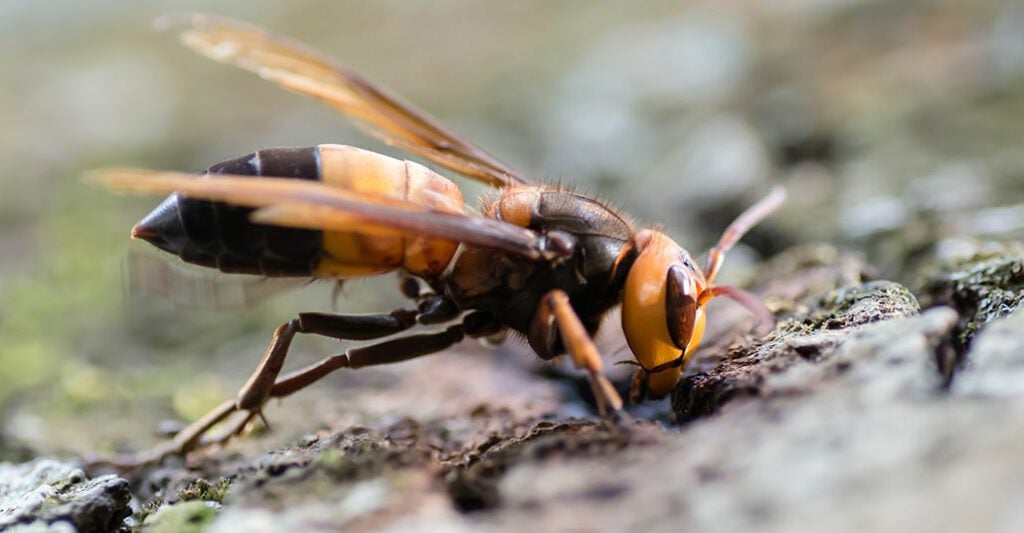Murder Hornets are a grave threat to honeybees. These hornets can easily destroy a hive in a matter of hours. They would feed on larvae and decapitate bees in its way. But did you know that honeybees utilize animal poop to discourage a murder hornet invasion?
To ward off deadly hornets, honeybees spread animal poop on their hive entrances. This is one of the few documented instances of insects using tools to protect their home.
How Do Honeybees Use Animal Poop?
Pollen, nectar, and tree sap are all collected by honeybees. Gard Otis was perplexed when he saw unusual brown stains the size of poppy seeds encrusting beehives in Vietnam, a Southeast Asian country. Otis was quite aback when a beekeeper told him the smear was buffalo poop. He mentioned that he had never heard of honeybees collecting dung before. Otis is an ecologist who specializes in insect behavior. He formerly worked in Ontario, Canada, at the University of Guelph.
According to Heather Mattila, several hive entrances were completely smeared with dung. Mattila worked the study as a honeybee scientist at Wellesley College in Massachusetts. Asian honeybees use this stinking door ornament to defend their hives from a gigantic hornet or Vespa soror.
Vespa soror and its close relative, the Vespa mandarinia, are categorized as giant hornets for a reason. They’re among the world’s largest hornets, measuring 5cm or 2in long.
These things are the size of my thumb. They are terrifying.
Gard Otis, Ecologist, University of Guelph, Ontario, Canada
According to Otis, when they swarm a beehive colony, these hornets may kill thousands of bees in a matter of hours. Then they take over the colony and eat the honey produced by the bees. Bee larvae are frequently snatched and fed to the hornets’ own young.
Asia is home to giant hornets. However, V. mandarinia, sometimes known as the Murder Hornet, has lately spread throughout Washington State and British Columbia, Canada. Because bees in North America are kind of helpless, according to Otis, biologists and beekeepers are concerned about this unexpected arrival. Beekeepers raise European honeybees all over the world. Many of the crop plants that supply sustenance for humanity are pollinated by these bees. They have no protection against the hornets from other countries. (Source: Science News for Students)
How Do Bees Protect Their Hive?
The Asian Honeybee Apis cerana, unlike Apis mellifera, has coexisted with enormous hornets for millions of years. During this period, the Asian bee has developed several effective defense mechanisms to combat these massive foes.
Hundreds of bees swarm an intruder and vibrate their wing muscles to create heat, known as bee balling. According to Mattila, a writhing ball of bees cooks or suffocates a hornet to death. Another method is to swarm the hive’s exterior, following which the mass of bees performs a synchronized series of rippling motions known as a wave. It causes the colony to shimmer, driving giant hornets away.
What some of these bees do with another animal’s dung appears to achieve the same result.
The researchers collected excrement from chickens, water buffalos, pigs, and cows to confirm that bees collected waste. They piled the dung near the beehives. After that, they waited.
The insects went back to their colony after collecting mouthfuls of dung. Around the hive entrances, they pasted tiny lumps and specks of feces. Mattila describes it as looking like you tossed cookie dough against the wall. This is referred to as fecal spotting by the researchers. (Source: Science News for Students)
